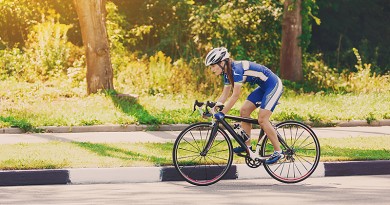This is the method of negative repetitions
See how to increase your muscle mass during the eccentric phase of the exercises. Ever heard of negative repetitions?
In the negative repetitions technique, the movements of the concentric phase are performed quickly, with an eccentric portion, or muscle extension performed slowly adding to the time when the muscle remains in tension
To finish the concentric phase of the exercise you can, in this particular type of training, need the help of a partner.
Muscle growth
The eccentric phase of the movement is also known as the negative phase. This is sometimes neglected during your workout and athletes usually pay more attention to the concentric portion of the movement, but it is precisely during the effort made in the eccentric phase that is muscle growth is powered. It is during this movement that the muscle fibres deteriorates, stimulating its growth. The trauma to the muscle contraction occurs primarily to make the extension movement.
Increase the load during the execution of negative repetitions works as a shock to the muscles, that are used to support less burdensome than they could keep.
This led to many of the exercises for the muscle hypertrophy precisely look to the eccentric portion of the exercise, since the muscle is about 40 to 50% stronger during the phase in which it is lowering the weight, than in stage that rises.
Most people can handle higher loads during static phases and downward movements of the exercises than in the act of lifting the weight. That’s because you need to control very well the movement so that the weight does not go directly to the floor.
Movement
The logic of negative repetitions is to use a larger load during the exercise to overload your muscle during the “descent” or eccentric phase. As for the concentric phase will, it would be difficult to lift that weight alone, so you may need the help of a partner.
Negative repetitions can be performed as complete series, in which only the downside of the exercise is repeated or as finishing technique, to end a series. In this case, when you’re at your limit, you should still do a few more negative repetitions. Essential for this training has the intended effect is that negative repetitions are always done slowly and that the movement amplitude as large as possible.
This technique requires greater caution of those who practice it, as the overloading of the muscles is prone to create injuries.







